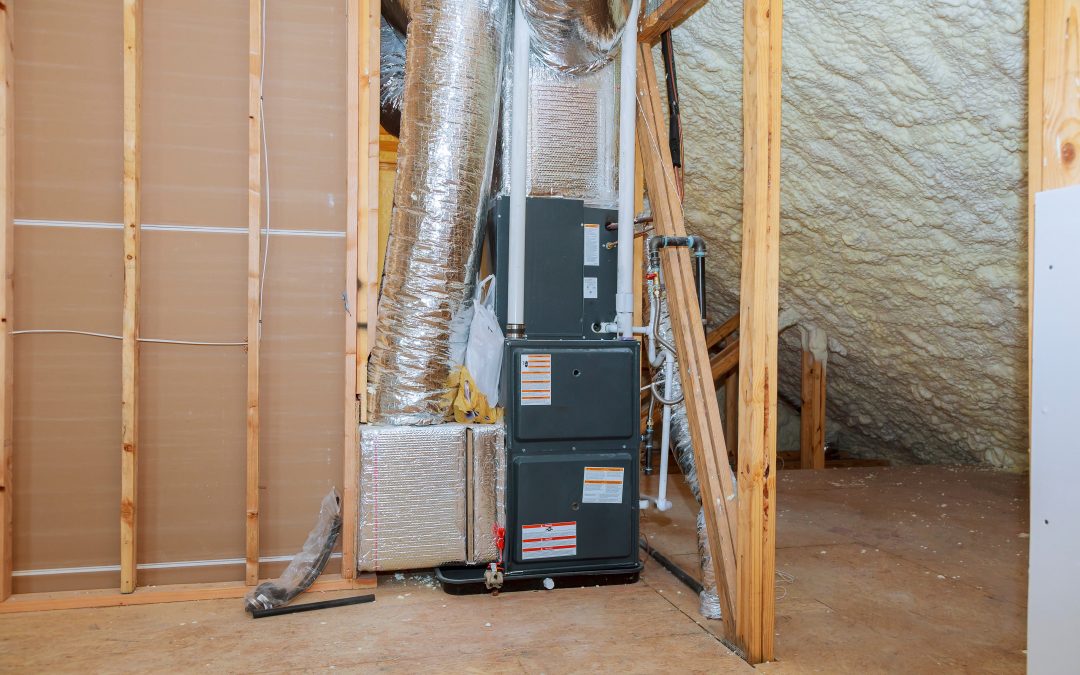The HVAC system inside your home is complex. It’s composed of many different parts that work together to heat or cool your home. Today we want to discuss the different parts of a furnace and how they function. Knowing the parts of your furnace is key to keeping it in good condition.
Read on as we shed some light on identifying the most important parts of your furnace, what their purposes are, and why it’s so important to take good care of them.
Parts of a Furnace
Burners
The gas burners are ignited by a pilot flame or electronic ignition that is incorporated in most modern gas furnaces. The main function of the gas burners is to heat up cold air using heat exchangers that are made of stainless steel. Then the warm air is distributed through the ducts by a blower motor.
Blower
Run by the blower motor, this is one of the crucial parts of the entire furnace system because it helps set up the air draft that is required for the operation of the furnace itself. The blower’s main purpose is to allow for easier intake of cold air and then channel it through to the heat exchanger chamber.
Heat Exchanger
The heat exchanger is made of heavy gauge metal mixed with alloys that resist temperatures above 2000° F to accommodate the extremely high temperatures that are reached inside the combustion chamber. That’s why it’s important to perform annual inspections and examine the state of the heat exchanger on a regular basis. If not, there could be dangerous consequences.
The heat exchanger is the part of the furnace that takes carbon monoxide out of the house. Because it is usually visible and easy to spot, it needs to be regularly inspected for cracks or rusting. Noticeable damage on the outside can run the risk of causing a carbon monoxide leak inside your home, which can be deadly.
Capacitor
Capacitors store electricity and help compressors and blower motors turn on and operate. Specifically, start capacitors provide motors with a boost in starting torque. Faulty capacitors lead to overheating, intermittent motor operation, humming noises and can even cause blower motor failure.
Vents
Vents are one of the only parts that are directly visible to the homeowner. Vents are usually made of stainless steel or PVC, with PVC being most common due to its durability. The vent pipe works by carrying the exhaust gasses that are formed due to combustion outside of the home,
Igniters
This is one of the key components designed for the safety of the furnace. The flame sensors, pilot, electronic or hot surface igniters monitor the presence of the flame in the combustion chamber. If the flame in the combustion chamber goes out, these sensors stop the flow of gas into the chamber using their link up with the gas control valve.
Control Board
The control board is the brain of the entire operation. Wires attached to the board run to the motor, gas valve, ignitor, and other necessary components. It controls your furnace by telling it when to kick on the gas and at which point the fan can shut off.
Modern furnaces use integrated circuit boards to monitor the furnace’s operation. It works because of light emitting diodes that show failure codes if the gas furnace is malfunctioning in any way.
Keep Your Ears Open
Most of the parts of the furnace are usually behind a door. According to experts, a person can actually hear certain parts of the furnace working.
The furnace is made up of the blower motor, the heat exchanger, the blowers, and the control board. They are the main components of a furnace, and none of them can be seen with the naked eye. Because you can’t physically see damage, listening for it is the next best thing. If you hear a loud popping sound, or any other sounds that don’t seem right, it’s time to call a professional.
Be Smart: Consult a Pro
We recommend always calling an experienced JW East Mechanical HVAC technician to come to your home and check everything out for you. We aren’t just saying that. There are fragile and expensive parts that need to be removed or moved, and only professionals have the hands-on experience to get it done correctly and safely.
If you are experiencing any issues with your HVAC system give us a call. We also recommend a fall furnace check to keep your system operating year round. We’ll perform regular maintenance to identify any worn parts or leaks. Most breakdowns in HVAC systems happen because of deferred maintenance, so have us perform these important checks every year and avoid the stress and inconvenience of a broken heater in the middle of winter.

